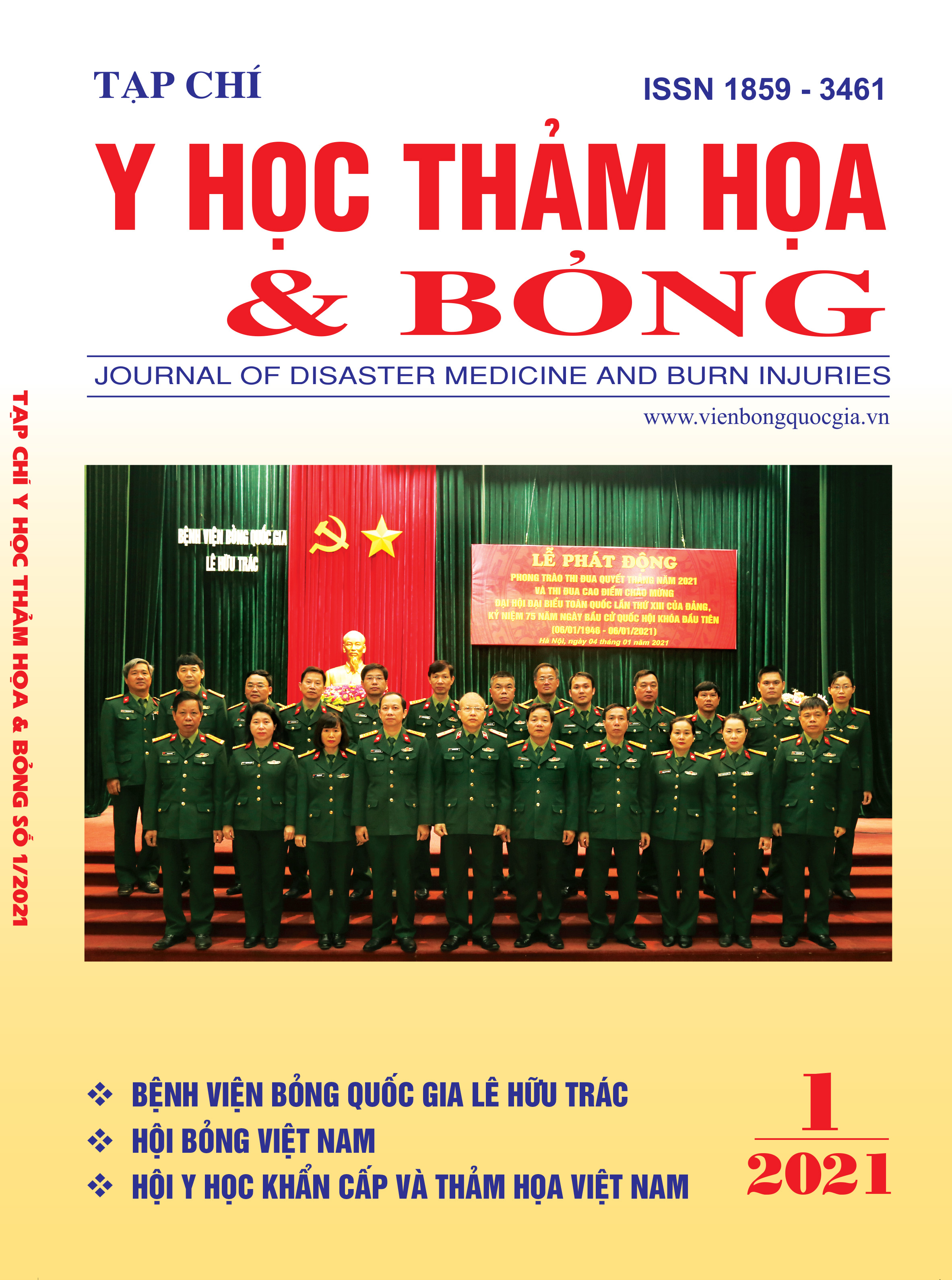Assessment of nurses’ knowledge and practice of preventive care for ventilator-associated pneumonia at ICU of Le Huu Trac National Burn Hospital in 2020.
Main Article Content
Abstract
Objective: To assess nurses’ knowledge and practice of preventive care for ventilator-associated pneumonia at ICU of Le Huu Trac National Burn Hospital in 2020 before and after training.
Subjects and study methods: Cross-sectional study, description, performed at the ICU of Le Huu Trac National Burn Hospital from April-2020 to September-2020 on 25 nurses directly taking care of patients under using a ventilator at the ICU - National Burn Hospital on knowledge and practice of preventive measures of ventilator-associated pneumonia.
Results: Nurses are aged between 20 - 40 years old, mainly working in the ICU for more than 10 years (56%). All nurses have a college degree or higher, of which 28% have a university degree. Before training, nurses have correct knowledge about using breathing apparatus, using water traps and correct practice in dental care, endotracheal suction is the lowest (68%). After training, the number of nurses with knowledge and practice of ventilator-associated pneumonia prevention is higher than before.
Conclusion: Training for nurses on the knowledge and practice of preventive measures of ventilator-associated pneumonia is necessary and should be done regularly, continuously, with inspection and supervision.
Article Details
Keywords
Ventilator-associated pneumonia, nurse, training
References
2. Bộ Y Tế (2015). Hướng dẫn chẩn đoán và xử trí hồi sức tích cực, Ban hành kèm theo Quyết định số 1493/QĐ-BYT ngày 22/4/2015 của Bộ trưởng Bộ Y tế, Hà Nội.
3. Society A. T., America I. D. S. o. (2005) Guidelines for the management of adults with hospital-acquired, ventilator-associated, and healthcare-associated pneumonia. American journal of respiratory and critical care medicine, 171 (4), 388.
4. Advisory S., Steering S., Committee I. P. G. (2018) ISBI Practice Guidelines for Burn Care, Part 2. Burns: journal of the International Society for Burn Injuries, 44 (7), 1617.
5. Palmieri T. L. (2009) Inhalation injury consensus conference: conclusions. Journal of Burn Care & Research, 30 (1), 209-210.
6. Blot S. I., Labeau S., Vandijck D., et al. (2007) Evidence-based guidelines for the prevention of ventilator-associated pneumonia: results of a knowledge test among intensive care nurses. Intensive care medicine, 33 (8), 1463-1467.
7. Đặng Thị Vân Trang (2011) Khảo sát mức độ tuân thủ thực hành phòng ngừa viêm phổi liên quan thở máy tại các đơn vị săn sóc đặc biệt bệnh viện Chợ Rẫy. Tạp chí Y học dự phòng, 7 (2).


